
Heliothis is a genus of moths in the family Noctuidae. It was first described by Ferdinand Ochsenheimer in 1816. Some of the species have larvae which are agricultural pests on crop species such as tobacco, cotton, soybean and pigeon pea. Some species originally in this genus have been moved to other genera, see Chloridea and Helicoverpa.

Epicopeiidae is a family of insects in the order Lepidoptera. They are known as oriental swallowtail moths as they closely resemble some oriental swallowtail butterflies. Epicopeiidae have highly varied structure in regards to body size and wing shape. Epicopeiidaen wing patterns are involved in complicated mimicry rings.
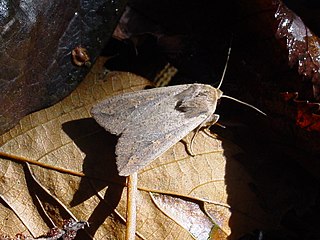
Mythimna is a genus of moths in the family Noctuidae described by Ferdinand Ochsenheimer in 1816.

Iraota timoleon, the silverstreak blue, is a species of lycaenid or blue butterfly found in Asia.
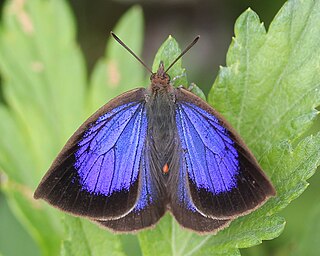
Arhopala is a very large genus of gossamer-winged butterflies (Lycaenidae). They are the type genus of the tribe Arhopalini. In the relatively wide circumscription used here, it contains over 200 species collectively known as oakblues. They occur from Japan throughout temperate to tropical Asia south and east of the Himalayas to Australia and the Solomon Islands of Melanesia. Like many of their relatives, their caterpillars are attended and protected by ants (myrmecophily). Sexual dichromatism is often prominent in adult oakblues.

Iraota rochana, the scarce silverstreak, is a species of lycaenid or blue butterfly with several subspecies found in Manipur, Myanmar, Java, Borneo, Sumatra, Malaya, Langkawi, Thailand, Singapore, Sulawesi and the Philippines. The species was first described by Thomas Horsfield in 1829.
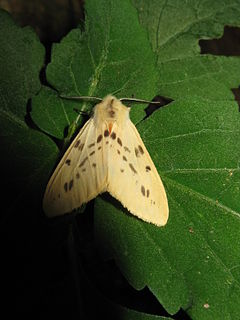
Lemyra is a genus of tiger moths in the family Erebidae. The genus contains many species from East and South Asia, Sundaland and Australia. It was described by Francis Walker in 1856.
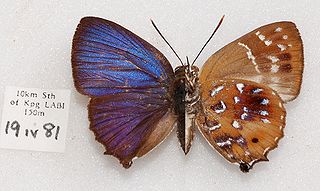
Iraota distanti, the Distant's silverstreak, is a species of lycaenid or blue butterfly with at least two subspecies found in Peninsular Thailand, Malaya, Singapore, Sumatra, Mentawi and Borneo.
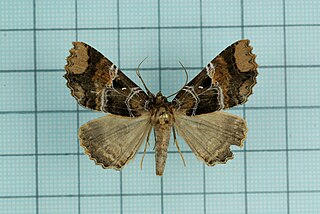
Sypnoides is a genus of moths in the family Erebidae.
Hastina is a genus of moths in the family Geometridae.

Baoris is a genus of grass skippers in the family Hesperiidae.It is found in the Indomalayan realm
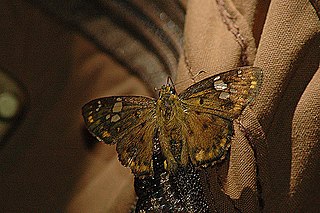
Coladenia is an Oriental genus of spread-winged skippers in the family Hesperiidae. They are found throughout most of Southern, Southeastern, and Eastern Asia. The genus contains the following fifteen species:

Suastus, whose members are called Palm Bobs, is a genus of grass skipper butterflies in the family Hesperiidae.

Asthenini is a tribe of geometer moths under subfamily Larentiinae first described by Warren in 1893. The tribe has been combined with Eupitheciini in the past, most notably by Jeremy Daniel Holloway in his work The Moths of Borneo.

Risoba is a genus of moths of the family Nolidae erected by Frederic Moore in 1881.

Phycodes is a genus of moths in the family Brachodidae.















